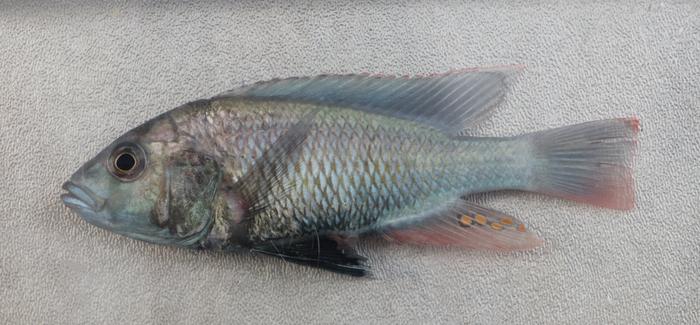
The remarkable adaptability of the cichlid fish in Africa’s Great Lakes has long stood as a testament to nature’s intricate design. Recent research conducted by a team of biologists at the University of California, Davis, has unveiled a groundbreaking perspective on how these species have evolved so rapidly compared to other groups of vertebrates. Notably, this research challenges conventional beliefs about evolutionary innovations, illustrating that it is not merely the innovation itself but rather the flexibility and ease with which these key traits are attained or relinquished that plays a crucial role in the diversification of species.
Cichlids are known for their astonishing variety, occupying diverse ecological niches and exhibiting a plethora of adaptations. This diversity is vividly apparent in their dentition, with many species showcasing either basic cone-shaped teeth or more intricate structures with multiple cusps. While simple teeth form a straightforward feeding mechanism, the complex dental adaptations enable cichlids to exploit a range of prey items, marking a significant evolutionary advantage. The possibility that these physical adaptations might be more than just responses to environmental demands is now gaining traction as scientists delve deeper into the mechanics of evolutionary processes.
In this illuminating study slated for publication in the prestigious journal Nature, Nick Peoples, a graduate student at UC Davis and the primary investigator behind the research, suggests that the capacity for rapid evolutionary change hinges on the inherent lability of key traits. Over a two-year period, Peoples meticulously gathered data from over 30,000 fish species, with a particular focus on 1,000 distinct African cichlid species. This extensive project involved reconstructing the evolutionary timeline of dental variations, pinpointing how often complex teeth have developed and subsequently vanished.
Peoples and his research team discovered an astonishing pattern: while complex teeth materialized 86 times across the broader spectrum of fish evolution, their prevalence is notably greater amongst African cichlids. The data demonstrated that these fish do not merely possess complex dental anatomy; they also exhibit a unique ability to shift quickly between simple and complex teeth. This switching mechanism appears to be a significant driver behind the swift emergence of new species, suggesting that flexibility itself is an evolutionary asset.
Intriguingly, the research reveals that the capacity to alternate between dental types is facilitated by a retained genetic blueprint within the cichlid lineage. This suggests that these fish have conserved the evolutionary underpinnings that allow for swift adaptation, thus bolstering their ability to form new species in the face of shifting environmental conditions. Such adaptability confirms the notion that evolutionary change is not a linear progression driven solely by new innovations, but rather a dynamic interplay of retention, loss, and transformation.
The implications of these findings extend beyond the realm of cichlids and may well provide insights applicable to other groups of organisms exhibiting multistable traits. For instance, features such as adhesive toe pads in tree frogs have similarly evolved multiple times and may benefit from a similar evolutionary framework that emphasizes adaptability and flexibility. This perspective beckons a reevaluation of how scientists approach the understanding of evolutionary innovations, urging a closer examination of the conditions under which these traits emerge and recede.
As the research continues to make waves within the scientific community, it underscores the profound interconnectedness of biological traits and evolutionary processes. The study serves as a critical reminder that evolution is not merely a product of environmental pressures driving organisms toward new complexities but is rather a tapestry woven from the threads of adaptability and innovation. Cichlids, through their unique dentition and capacity for change, embody this intricate interplay and stand as a model for understanding rapid evolutionary dynamics.
The findings are poised to inspire future research not only in ichthyology but also in broader evolutionary biology. As scientists further investigate the mechanisms underlying trait flexibility and the environmental factors influencing evolutionary pathways, a more nuanced comprehension of biodiversity and species formation may emerge. In this light, the cichlid fish continue to offer an exceptional opportunity to unlock the mysteries of evolution itself.
In summary, the findings from UC Davis contribute significantly to our understanding of how species can rapidly diversify in response to complex innovations and environmental demands. By examining the evolution of cichlid teeth, researchers unearth a vital principle of evolutionary biology: that the ability to adapt and change rapidly may prove just as essential as the innovations themselves. As such, the cichlid fish of Africa’s Great Lakes remain not only a testament to evolutionary success but also a beacon guiding future explorations into the depths of evolutionary science.
Subject of Research: Animals
Article Title: Evolutionary lability of a key innovation spurs rapid diversification
News Publication Date: 26-Feb-2025
Web References: None
References: None
Image Credits: Credit: Nick Peoples, UC Davis
Keywords: Adaptive evolution, Ichthyology, Fresh water fishes, Teeth, Species diversity, Discovery research.
Tags: adaptive evolution in cichlid fishbiologists at University of California Daviscichlid fish dentition diversityecological niches of African cichlidsevolutionary advantages of complex traitsevolutionary biology research breakthroughsflexibility in evolutionary traitsGreat Lakes cichlid speciesinnovation in vertebrate evolutionrapid species diversification mechanismsrole of teeth in fish evolutionsignificance of dental adaptations in cichlids





